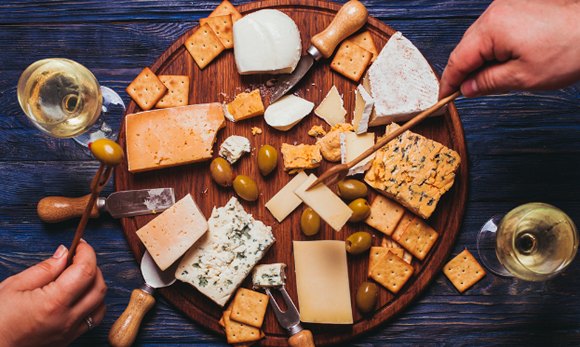
Pairing Wine And Food: Should We Follow The Rules?
There’s nothing better than inviting friends, family and loved ones over for an evening filled with incredible food and wine. Have you ever wondered why people take food and wine pairings so seriously? Perhaps you’re under the impression that it is something only snobs or hardcore foodies are interested in. The truth is, successful wine pairing enhances the dining experience by heightening the flavours, textures and qualities of any given dish.
Although the strategy behind food and wine pairing can be incredibly complex, the basics needn’t be rocket science. If you’re planning a feast sometime soon and are looking to impress with your wine selection, you’ve come to the right place. To make things a little easier on you, here are five basic yet adaptable rules to follow when pairing food and wine.
1. The Red vs White wine pairs perfectly with meats
The first thing that probably comes to mind when you think of food and wine pairings is the old adage of “red with meat and white with fish”. While this rule isn’t one that is set in stone, it does serve as a basic understanding of what types of wine to pair when you are serving different meat based dishes. For example, red wine pairs perfectly with meats such as beef, duck or lamb due to its high tannin content which easily complements the rich fattiness that can be found in red meat. On the flipside, white wines are a great pairing with meats such as fish, seafood or chicken as its higher acidity content can instantly brighten the flavours of your seafood or cut through rich sauces that are often used in many chicken or fish dishes.
Some of our favourite types of wine to pair with red meats include Shiraz, Cabernet Sauvignon and Pinot Noir. Perfect accompaniments to fish and chicken include Pinot Grigio, Sauvignon Blanc and Riesling.
2. Keep Food & Wine At Similar Weights
When we talk about weight, we aren’t referring to the standard grams, kilos or pounds that may come to mind. Instead, we are referring to pairing richer or heavier foods (cream sauces, red meat etc) with a heavier weight wine and vice versa. Lighter bodied wines such as Chardonnay or varieties of red wines that are lower in tannins are the perfect complement to dishes such as salads, fish and poultry. Meanwhile, heavier dishes such as red meat casseroles, stews or pies tend to stand up better against options such as Shiraz, Merlot or Pinot Noir.
When considering what wine to pair with your dishes, it is important to take into account how ‘heavy’ or rich your final dish is going to be, and to then choose a wine that won’t be easily overpowered by strong flavours or textures.
3. Always Consider Acidity
Both red and white wines come in varying levels of acidity depending on variety and age and it is important to consider this when choosing the perfect wines to compliment your food. Wines with higher acidity (Riesling, Chablis and Muscadet) are often chosen as palate cleansers in between courses of rich foods such as curries, stews or butter based sauces such as Hollandaise. One thing to note however, is that acidic wines are not a good match for creamy sauces such as Carbonara, Alfredo or Cream Stews.
Dishes with a higher acid content (vinaigrette dressed salads, citrus, tomato sauces) pair better with dryer wines such as Pinot Grigio, Syrah or Sangiovese.
Top Tip: If you’re unsure of how acidic a particular wine is, simply consider climate. Wines from cooler climates will contain more acidity than those from warmer climates.
4. Sugar, Oh Honey, Honey
Another rule we recommend adhering to when pairing your food and wine is to choose a variety of wine that is as sweet or sweeter than the dish you are serving. This is because sweeter ingredients or dishes tend to make drier wines taste sharp, acidic or overly bitter. Sweetness is also a great way to balance salty flavours, making options such as Sauternes and Grenache Rosé the ideal accompaniment to salty options such as nuts, cheeses, olives and cured meats.
5. Match Spice With Spice
Love a big bowl of spicy Thai, Indian or Southeast Asian curries? In most cases, most wine connoisseurs will advise against pairing wine with spicy dishes as chillies and hot species have the potential to destroy or clash with the flavours of wine. However, if you still want to pair a hot curry with a delicious glass of wine, we suggest heeding the advice to match spice with spice. Spicier wines such an off-dry Gewürztraminer or Riesling are able to better stand up to the power and intensity of a spicy curry, without being overpowered or diminished.
A few other wines we love to pair with hot dishes include Syrah/Shiraz blends, Sparkling Shiraz or California Chardonnays.
At the end of the day, there are really no right or wrong answers to food and wine pairings as it is a topic that is highly subjective in nature. The above are some basic guidelines to matching food and wine but always remember that these are not hard and fast rules; match to your individual preferences and tastes, and you won’t go wrong!







